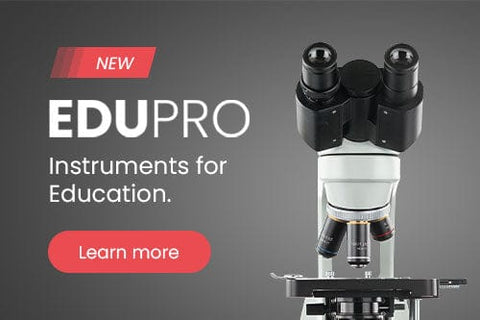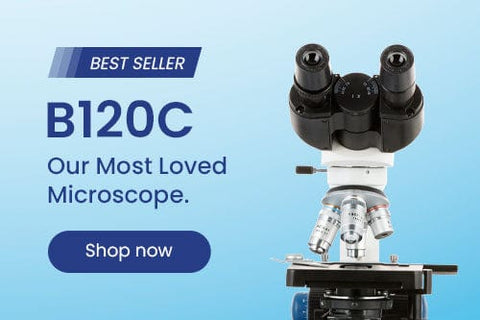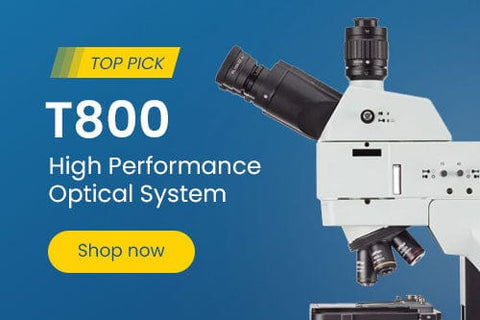- Microscopes
- Cameras
- Lab Supplies & Equipment
- Shop By Brand
- Lab Supplies by Category
- Analyzer Consumables
- Balances
- Bags
- Beakers
- Bench Scale Bases
- Bottles
- Bottletop Burettes
- Bottletop Dispensers
- Boxes
- Blank Microscope Slides & Cover Slips
- Blood Collection
- Caps
- Carboys
- Centrifuges
- Centrifuge Tubes
- Cold Storage
- Containers
- Cryogenic Vials
- Culture Tubes
- Cylinders
- Dispensers
- Digital Dry-Baths
- ESR Products
- False Bottom Tubes
- Flat Bottom
- Funnels
- Gel Documentation
- Glassware
- Glass Test Tubes
- Histology
- Homogenizers
- Hotplates-Stirrers
- Inoculation Loops and Spreaders
- Liquid Handling Products
- Manual-Electronic Pipettors-Pipettes
- Microscope Slides
- Overhead Stirrers
- Pipette Controller (Serological Filller)
- Pipette Tips
- Plastic Test Tubes
- PCR Tubes, Strips & Plates
- Racks
- Repeater Pipettor
- Rockers
- Rotary Evaporators
- Serological Pipettes
- Shakers
- Spectrophotometers
- Syringe Tips
- Sample Tubes
- School/Classroom Supplies
- Screwcap Test Tubes
- Self-Standing
- Test Tube Racks
- Test Tubes & Vials
- Transport & Storage Tubes
- Thermal Mixers
- Transfer Pipets
- Urinalysis
- Vacuum Pumps
- Weighing Dishes
- Lab Equipment
- Balances
- Bench Scale Bases
- Centrifuges
- Digital Dry-Baths
- Gel Documentation
- Homogenizers
- Hotplates-Stirrers
- Overhead Stirrers
- Pipettors
- Rockers
- Rotary Evaporators
- Shakers
- Serological Pipettes
- Spectrophotometers
- Thermal Mixers
- Vacuum Pumps
- Liquid Handling Products
- Manual-Electronic Pipettors-Pipettes
- Pipette Tips
- Racks
- Pipette Fillers-Controllers
- Repeater Pipettor
- Syringe Tips

Cost effective products and solutions designed to improve laboratory efficiency, safety and results.
SHOP BENCHMARK SCIENTIFIC >
- Slides & Accessories
- Slides
- Cameras
- Illuminators
- Adapters
- Eyepieces / Objectives
- Bulbs
- Magnifying Lamps
- Monitors and Tablets
- View All Categories
- Adapters
- DSLR Adapters
- USB Camera Adapters
- Ring Light Adapters
- Power Adapters
- Barlow Lens
- Books & Experiments Cards
- Bags & Cases
- Bags
- Cases
- Cameras
- Circuit Board Holders
- Cleaning Kits
- Condensers
- Darkfield
- Phase Contrast Kits
- Polarizing Kits
- Dust Covers
- Eye-Guards
- Eyepieces
- 20mm
- 23mm
- 30mm
- 30.5mm
- Filters
- Microscope Filters
- Illuminator Filters
- Fluorescence Kits
- Conversion Kits
- Filter Cubes
- Focusing Racks
- Fuses
- Illuminators
- Bulbs
- LED Illuminators
- Fiber Optic Illuminators
- Fluorescent Illuminators
- Ring Lights
- Stand Lights
- Goosenecks
- Gooseneck Attachments
- Immersion Oils
- Loupes
- Magnifying Lamps
- Clamp Lamps
- Desktop Lamps
- Rolling Stand Lamps
- Mechanical Stages
- Monitors and Tablets
- Calibration Slides & Stage Micrometers
- Stage Warmers
- Stain Kits
- Stands
- Articulating Arm Stands
- Boom Stands
- Table Stands
- Tweezers
- Other Accessories
- Shop By Industry
- Shop By Industry
- Botany
- Agronomy & Forestry
- Horticulture
- Phytopathology
- Chemistry
- Biochemistry
- Biotechnology
- Cannabis
- Pharmaceutics
- Consumables
- Beer & Wine
- Cosmetics
- Food & Beverage
- Electronics
- Circuit Boards & General Electronics
- Mobile Phone Repair
- Semiconductors & Wafers
- Environmental
- Asbestos
- Ecosystem Research
- Mud Logging
- Soil Treatment
- Water Treatment
- Forensics
- Ballistics
- Fingerprint Analysis
- Genetic Identification
- Hair & Fiber Analysis
- Handwriting Analysis
- Industrial
- Aerospace
- Automotive
- Dental Lab & Production
- Glass Industry
- Industrial Inspection
- Mechanical Parts
- Paper Industry
- Petrochemical
- Plastics
- Printing Industry
- Quality Assurance & Failure Analysis
- Textiles & Fibers
- Tool Making
- Wood Production
- Jewelry & Gemology
- Engraving
- Gemology
- Jewelry Repair
- Stone Setting
- Watch Repair
- Hobby
- Coins & Collecting
- Stamps
- Modeling & Assembly
- Sculpting
- Repair
- Telescopes
- Metallurgy
- Archaeology
- Geology
- Mining
- Petrology
- Medical & Microbiology
- Anatomopathology
- Bacteriology
- Biochemistry
- Cell Culture
- Cytology
- Dental Microbiology
- Dermatology
- Dissection
- Gout & Rheumatology
- Hair & Fiber Analysis
- Hair Transplant
- Fluorescence
- Hematology & Live Blood Analysis
- Histopathology
- Mycology
- Medical Devices
- Microsurgery
- Neuropathology
- Oncology
- Parasitology
- Pathology
- Semen Analysis
- Virology
- Veterinary & Zoology
- Breeding & Semen Analysis
- Entomology
- Fecal Smears & Floats
- Marine Biology
- Ornithology
- Veterinary Medicine
- Zoology
- Shop By Industry
- Students
- Telescopes
- Buy With Prime
- Sale
- Compound Microscopes
- Shop By Brand
- AmScope
- Euromex
- Omax
- Shop by Head Type
- Binocular
- Monocular
- Trinocular
- Multi-head & Training
- Shop By Specialty
- Brightfield
- Darkfield
- Phase Contrast
- Inverted
- EPIfluorescence
- Polarizing
- Digital Integrated
- Metallurgical
- Shop By Application
- Education
- Research
- Veterinary
- Compound With Digital Head
- Shop Best Sellers
- Shop All Compound
- Stereo Microscopes
- Shop By Brand
- AmScope
- Euromex
- Shop By Objective Type
- Fixed Power
- Zoom Power
- Single Lens
- Common Main Objective
- Shop By Stand Type
- Articulating Arms
- Boom Stands
- Gooseneck Stands
- Table Stands
- Other Stands
- Shop By Head Type
- Binocular
- Monocular
- Trinocular
- Simul-Focal
- Shop By Industry
- Video Inspection
- Industrial Inspection
- Microscope Heads
- Shop Stands
- Articulating Arm
- Boom Stands
- Table Stands
- Stereo With Digital Head
- Shop Best Sellers
- Shop All Stereo
- Specialized Microscopes
- Digital Microscopes
- Kids, Student Microscopes
| AmScope Blogs
Examining the Different Types of Microscopes: Which One Is Right for You?

Microscopes are easily the single most important piece of equipment in any lab. Due to the broad range of specialties and careers that require the use of microscopes, it is impossible to lump microscopes into any single category. Being ubiquitous and specialized at the same time, it is essential to understand the features of each microscope type to determine which one will fit your needs.
There are few instruments as fascinating and as varied as the microscope, with everything from $100 student microscopes to $27 million electron microscopes on the scene. Since their invention centuries ago, there is no tool more highly regarded nor singly crucial to the functioning laboratory that the correct microscope as dictated by that lab's needs and requirements. Regardless of if you're looking for a professional option for your school or lab, or you're an individual looking for something fun to tinker with, you’ll be surprised to find that there’s probably a scope made specifically for you.
At AmScope, we’re on hand to help you examine the primary types of microscopes available, so you find one that's perfectly tailored to your field of study, budget, and user. So, without further ado, let’s scope out the most common kinds of microscopes on the market.

Compound Microscopes
Compound light microscopes are light microscopes with more than one lens. They send light through the specimen, which allows viewers to see structures within the cells as well as their outlines. Choose a compound microscope if you need to be able to view the internal structures of cells and need high magnification up to 1000x.
Almost all light microscopes used today are compound microscopes. They feature two different lenses—the ocular (the lens closest to the eye) and the objective (the lens closest to the object). Often, they’re also light microscopes and may be referred to as compound light microscopes if they use two lenses and are illuminated by a light source. As you’ll see below, there are several different types of compound microscopes that can be used for various purposes.
Dating back to at least 1595, compound microscopes were first invented by Jansen, who found that two lenses could create magnification up to 9x. Building upon the research of Jansen and van Leeuwenhoek, English scientist Robert Hooke further developed the compound microscope by incorporating a stage to hold the specimen, an illuminator as well as controls for coarse and fine focus. These developments earned Hooke the nickname “the English Father of Microscopy.”
Types of Compound Microscopes
-
Brightfield Microscopes — Considered the “conventional” microscopy technique, a brightfield microscope shows a darker specimen with a brighter background. In a laboratory setting, this variety of microscope is among the most common. It’s ideal for a wide variety of medical analysis and is also used for the viewing of blood cells, bodily fluids, bacteria, single-celled organisms, algae, metal fractures, diamonds, precious stones, and even shrimp. These scopes are often combined with metallurgical and stereo technologies for specific applications. View our brightfield microscopes here.
-
Darkfield Microscopes — On the other hand, darkfield microscopes show a brighter specimen over a darker background. Many brightfield microscopes can be converted to simple darkfield with a special filter. But, these microscopes are ideal for high-quality darkfield viewing organisms, living bacteria, living or slightly stained transparent specimens, soil samples, pollen samples and specimens from aquatic environments. View our darkfield microscopes here.

-
Metallurgical Microscopes — Metallurgical microscopes are principally used for inspecting metals, ceramics, and objects that do not allow light to pass through. They provide a fairly high magnification level and use reflected and transmitted light for optimal viewing of opaque specimens. You’ll find metallurgical microscopes in darkfield, brightfield, inverted, and polarized styles. View our metallurgical microscopes here.
-
Polarizing Microscopes — Used in the field of polarizing light microscopy, polarizing microscopes are used to enhance the contrast of a specimen via polarized light. This technique allows you to evaluate three-dimensional structures of anisotropic specimens by forcing the light waves to vibrate in a single direction. They are most commonly used to look at gems, rocks, geodes, chemicals, and minerals. View our polarizing microscopes here.
-
Phase Contrast Microscopes — Like polarizing, phase contrast is a contrast-enhancing technique that is great at creating high-contrast views of colorless and transparent specimens. Because of this, phase contrast microscopes are often employed to inspect living cells, especially culture, as well as microorganisms, thin tissue slices, grass fragments and more. View our phase contrast microscopes here.
-
EPI Fluorescence Microscopes — Used in the field of fluorescence microscopy, these microscopes are just like typical compound microscopes but feature high-intensity, broad-spectrum light that illuminates a specimen from above and sends light into the sample. The special samples lit up by fluorescence enables studying the properties of organic and inorganic substances. View our EPI-fluorescent microscopes here.
-
Inverted Microscopes — These types of microscopes feature the light source and condenser (a type of optical lens) pointing down towards the stage. This is in contrast to a typical upright microscope. Inverted microscopes are ideal for live cell imaging because the cells sink to the bottom onto the coverslip and allow sample access from the top. They do not require contact between the sample and the objective, which allows for sterile working conditions Inverted microscopes are available in brightfield, metallurgical, phase contrast, EPI fluorescence and combinations of these. View our inverted microscopes here.
Stereo Microscopes
Also known as dissecting microscopes, stereo microscopes are low-magnification, binocular (two eyepieces) microscopes that provide a three-dimensional view of an object. If you need to examine relatively large objects, you probably need this kind of microscope.
The stereo microscope took centuries to develop. It was first conceived by a curious monk named Cherubin d’Orleans in 1677, who created a small microscope containing dual eyepieces and objective lenses, but the version we know today didn’t come to be until the 1800s. Then, building upon the principles of stereoscopic vision published by scientists Charles Wheatstone and John Leonard Riddell, American instrument designer Horatio S. Greenough came up with the original stereo microscope.

The stereo microscopes we use today are still made based on the original designs and principles developed by Greenough. They are all based on the concept that two eyepieces function much like the real, natural eyes—they produce two images from two different angles, creating a three-dimensional image put together by the brain. Though they have lower magnification power than compound microscopes, stereo microscopes have a longer working distance and a larger field of view.
These kinds of microscopes work best for samples you can’t pass light through, such as solder joints on a circuit board, insects, or coins. They are also commonly employed by biologists and students when performing dissections as well as to repair circuit boards and examine fossils. There are two primary types of stereo microscopes: fixed power and zoom power.
-
Fixed Power Stereo Microscopes — Best for amateurs and students, fixed power microscopes are more affordable but more limited. They are equipped with a set number of fixed position objections, so they offer only the listed magnification options and nothing in between. With that being said, they are simpler and easier to focus, which makes them an excellent choice for beginners and students who may not have much experience in microscopy.
-
Zoom Power Stereo Microscopes— On the other hand, zoom power microscopes are more expensive but more advanced. They allow you much more flexibility, as the objective lenses can be moved farther away or closer to the sample.
Digital Microscopes
Digital microscopes are much like traditional, optical microscopes but feature a built-in digital camera, which is connected to a computer to monitor, record and save photos or videos for data collection. Images may then be displayed on a computer or TV screen.
These days, everything has gone digital, so why not the microscope? Truly, digital microscopy has changed the game in a very big way as it pertains to research, education, healthcare, and many other sectors. Scientists, artists, teachers, and engineers use camera-equipped digital microscopes for hundreds of applications, from conducting virus research at major universities to ensuring quality control in commercial labs. Digital applications in the lab have revolutionized an array of industries, and there seems to be no limit as to what will be developed next.
In addition to cameras, digital microscopes are also often equipped with more of the technologies we use every day. For example, there are handheld USB microscopes that make it extremely simple to capture photos of your specimens and send them to your computer, where they can be easily stored using the included software. Other microscopes are able to transmit data via Wi-Fi or Bluetooth. Amazing, isn’t it?
You can also update a regular microscope with an external camera and make it digital. See our digital camera section here for all compatible cameras: Microscope Cameras.
Student Microscopes
Student microscopes come in a wide range of different microscope types but are specifically designed for student use. They are generally less complex than professional microscopes and may include features specifically for teaching.

The microscope you used in your high school biology class was most likely a student-specific microscope. These microscopes come in a vast assortment of types to help illustrate the various fields of microscopy, but they are generally simplified and may feature learning-specific functions that can be employed by teachers. Often, they’re more durable with fewer fragile pieces than conventional microscopes. Regardless of the simplified engineering, even microscopes branded as ‘student’ models are commonly found in some of the most robust and highly rated technical programs in universities across the nation. These tools are among the most essential investments these programs make.
Generally, student microscopes are categorized by age group—you’ll find options for users at any stage in their education, from elementary school students to graduate students and research fellows. Note that student microscopes are not the same as kids’ microscopes, which are generally used at home and are typically even less complex and fragile than student versions. Kid-friendly microscopes are more like toys than student microscopes.

Finding the Right Microscope for Your Unique Needs
We know that choosing the right microscope can be a serious challenge, so we’re always on hand to help. At AmScope, it’s our goal to help pair you with the right scope for your specific needs, application, and budget. We’re so committed to this value that we can even help you build your own microscope that includes all the special features you need. Happy scoping!
Free Shipping on orders $149+
Same day shipping for orders within the contiguous U.S.
Easy Returns
Hassle-free 30-day return policy. 100% satisfaction guarantee.
Quality Products
5-year warranty on AmScope microscopes.
Got a question?
Speak to our team of experts and find the products you need.
















